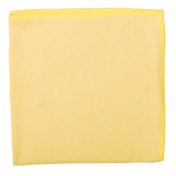The Power of Chlorine: Cleaning and More
Chlorine is a fascinating chemical element that influences our way of life in many ways. Not only is it an indispensable element in nature, but it is also an important ingredient in many cleaning and disinfection products. In this blog post, we want to take a closer look at the role of chlorine in cleaning and its importance for our health and hygiene.
The Chemistry of Chlorine
Chlorine is a highly reactive element in the halogen group with the chemical symbol Cl and atomic number 17 in the periodic table of elements. In its pure form, it exists as a poisonous, greenish gas that is extremely reactive under normal conditions. Due to its reactivity, chlorine is often used in conjunction with other elements to produce a variety of compounds that are widely used in various industries, including cleaning.
Chlorine in water purification
One of the best-known uses of chlorine is its use in water disinfection. For many years, chlorine has been used in waterworks to remove pathogens and bacteria from drinking water. By adding chlorine or chlorine-containing compounds, effective disinfection is achieved, which reduces the spread of diseases such as cholera and typhoid and protects the health of the population.
chlorine in cleaning products
Chlorine is also found in many household and industrial cleaning products. It is an extremely effective disinfectant used in bleach, disinfectant sprays, cleaning wipes and other cleaning products. Chlorine kills a wide range of microorganisms, including bacteria, viruses and fungi, helping to keep surfaces clean and hygienic. Cleaners containing chlorine are also commonly found as mold removers .
Safety instructions when handling chlorine
Although chlorine is an effective cleaning component, it is important to exercise caution when handling chlorine-containing products. Chlorine can be harmful if used improperly and can cause skin, eye and respiratory irritation. Therefore, it is important to use chlorine-containing products according to the instructions on the label and to take appropriate protective measures, such as wearing gloves and ventilating rooms.
Alternative cleaning methods
Despite its effectiveness as a disinfectant and bleach, there are also alternative methods of cleaning that are less harmful to the environment and pose fewer health risks. For example, vinegar, baking soda and lemon juice can be used as natural cleaning agents to clean and disinfect surfaces without having to resort to products containing chlorine.
Overall, chlorine is an extremely versatile element that plays an important role in cleaning and disinfection. Its ability to kill microorganisms and disinfect surfaces helps keep our environment clean and hygienic. However, it is important to exercise caution when handling chlorine-containing products and consider alternative cleaning methods to protect human and environmental health.



